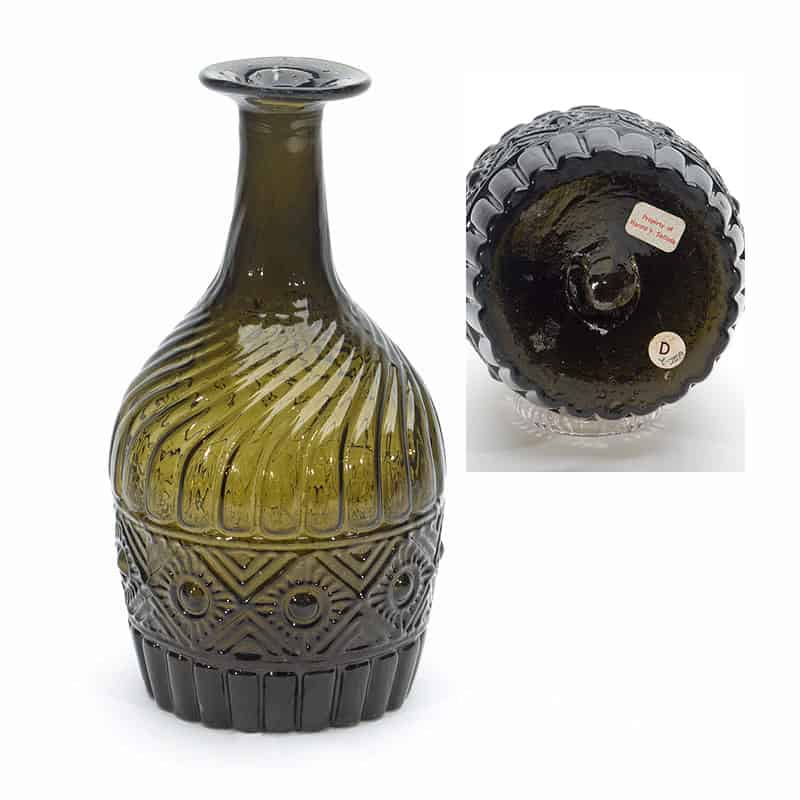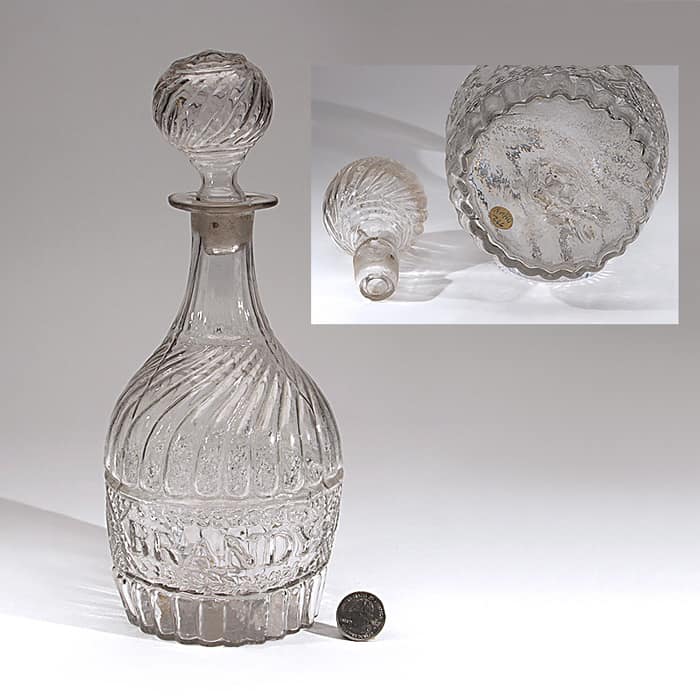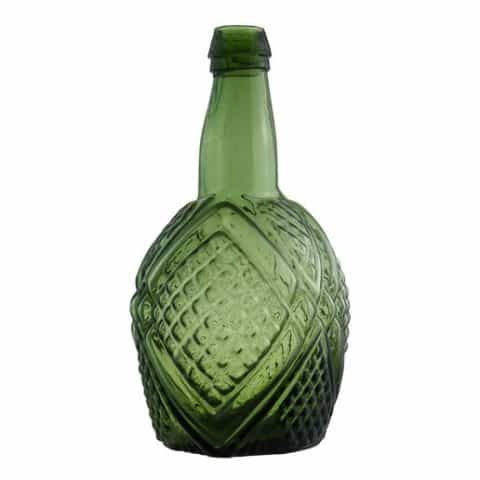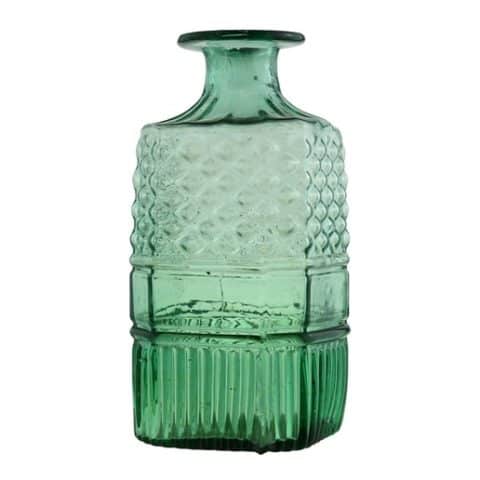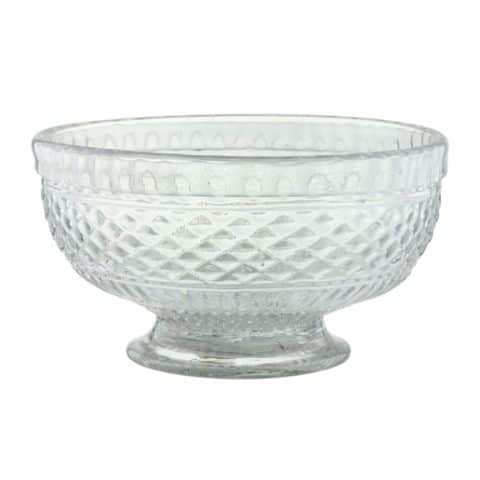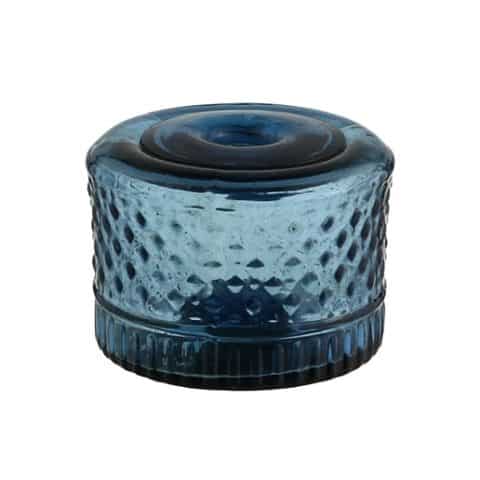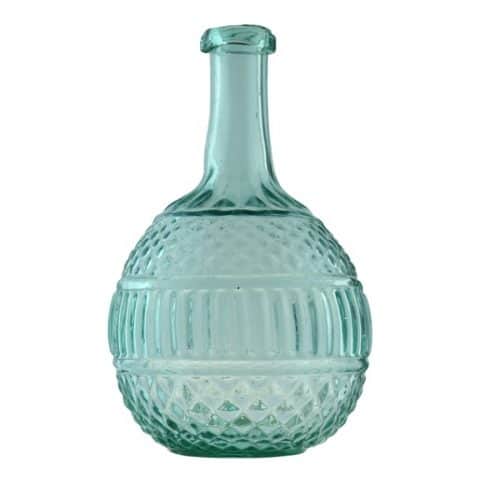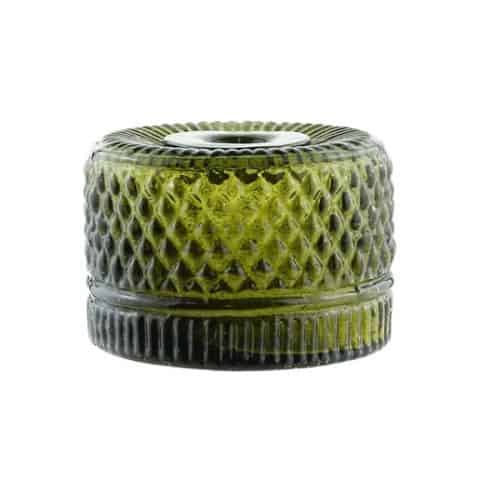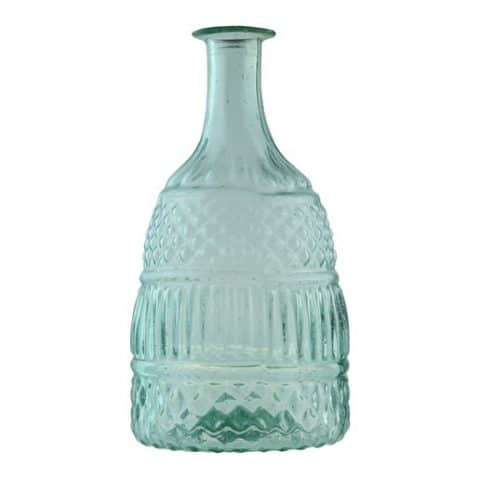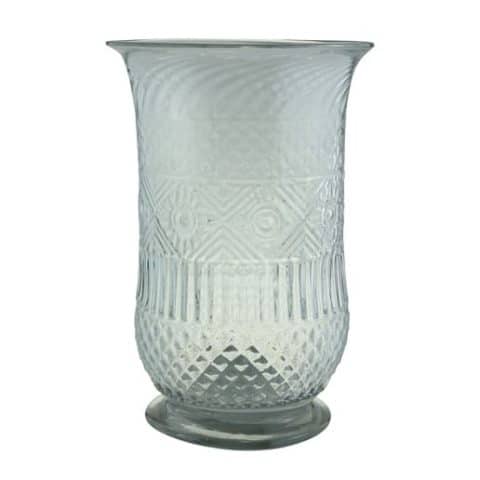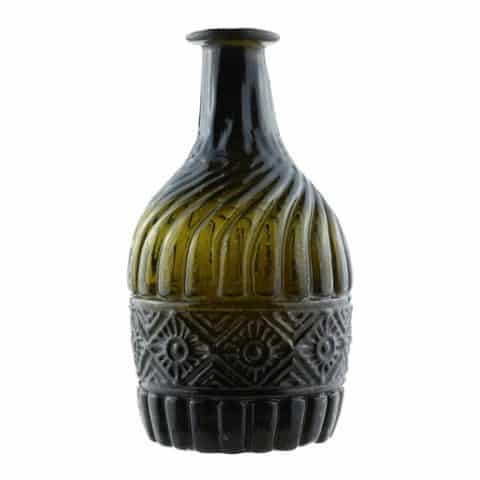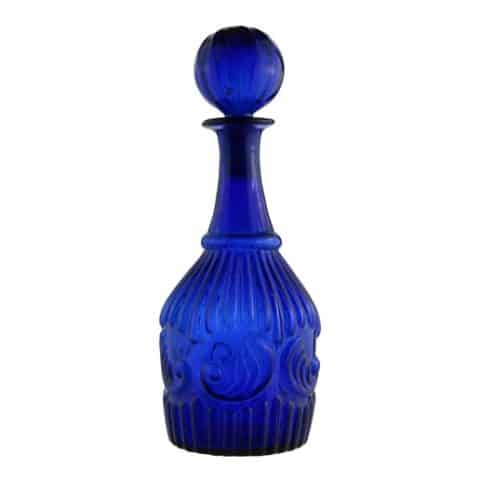GIII-2 Mount Vernon Decanter
Blown Three Mold
Mount Vernon Decanter
GIII – 2
Type 2
Attributed to Mount Vernon Glass Works, Vernon, New York
Pint Deep Yellow Olive Sunburst Motif Decanter
Provenance: Robert Hilton Collection, ex Richard S. Ciralli Collection
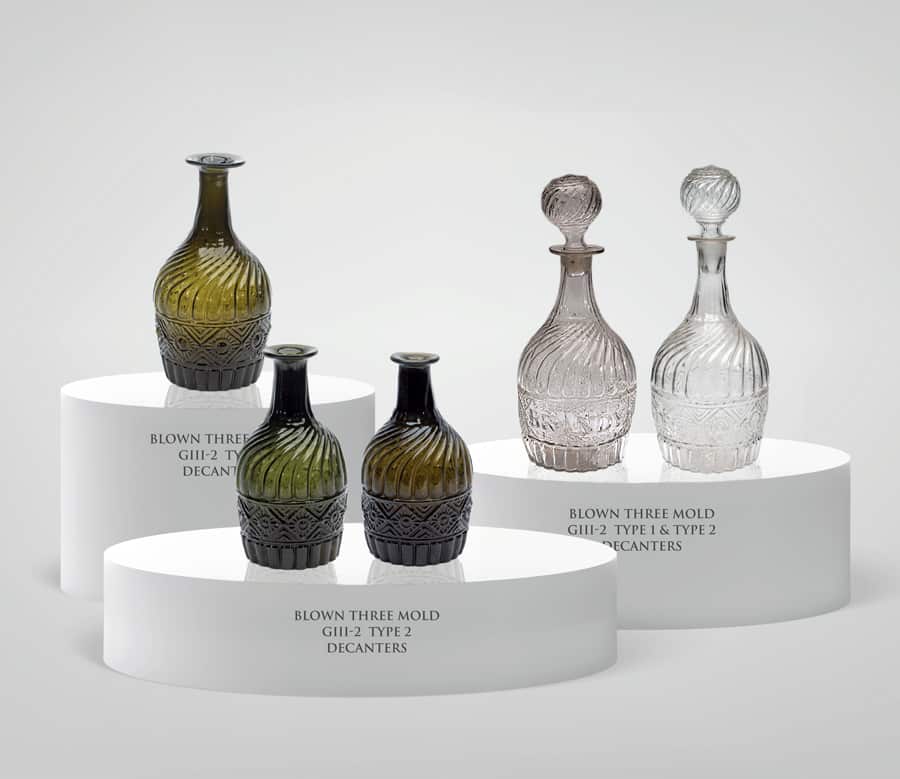
In the history of American glass design, Blown Three Mold was a milestone as it was a new and, in some respects, original line of commercial glassware. The glassworkers blew the molten glass into full-sized molds, which formed both the shape and pattern. Many designs and patterns were independent and constituted perhaps the first American contributions to tableware. These pieces appeared in 1820 and were distinctly an American product for many years, probably well until the 1830s.
Decanters have survived in the greatest numbers with collectors and are typically found in quart and pint sizes. Most decanters were made in clear Flint glass, and artificially colored metal was rarely used. Natural colors such as olive-amber, olive-green, and aquamarine are the norm.

McKearin charts our GIII-2 Decanter in two molds. Type 1 is a semi-barrel form with rounding shoulders that uses Sunburst Motif 10 and has a plain base. It is found in quarts, pints, and rarely, a half-pint. Type 2 is also a semi-barrel form with rounding shoulders using Sunburst Motif 11 and has a plain base. Among the most interesting decanters are those inscribed with the name of a liquor molded into the low relief in the battalion in the panel or medallion. These can be found in colorless glass, each reading in one word, Wine, Gin, Brandy, Rum, or Cherry. These examples are probably Brooklyn Flint Glass Works (1823-1868).
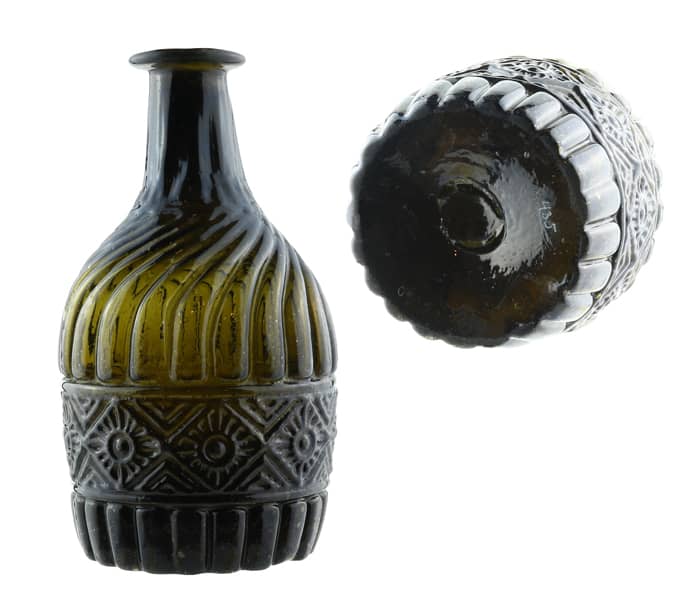
Our museum example represents a Blown Three Mold, GIII-2, Type 2, pint Sunburst Motif Decanter. The form is cylindrical and was blown in a deep yellow olive glass. There are broad swirled ribs in the top shoulder area sitting over and connecting with a ringed horizontal diamond and sunburst motif band. The bottom area visually connects wide vertical ribs aligned with the swirled ribs above. There is a tooled flared mouth on a broad tapered neck. The base is plain with has a pontil scar. The Decanter is considered rare and is attributed to the Mount Vernon Glass Works in Vernon, New York.
Mount Vernon Glass Works – Vernon, New York
An act for incorporating the stockholders of the Mount Vernon Glass Company was passed by the New York State Legislature on February 17, 1810. The originating stockholders were Abraham Van Eps, William Root, Benjamin Pierson, Robert Richardson, Isaac Coe, Daniel Cook, Benjamin Hubble, David Pierson, Oliver Lewis, and other local businessmen from Utica, New York, and the surrounding area.
While other glassworks in the area concentrated on the production of window glass, Mount Vernon produced bottles and hollowware. Products of this glassworks were primarily made from olive-green and aquamarine glass. Eventually, flint glass was introduced and blown three mold, and some pressed tableware was added to their production line.
The glassworks was sold to Charles Granger in 1823. In 1828 the incorporation expired, and the operations were continued as C. Granger & Co. Charles operated the glass factory with various partners until 1841, when he sold three-quarters of the company to his brother Oscar, Walter S. Todd, and Henry Chapman. The following year Chapman sold his share to Oscar and Walter, and in 1843 Charles sold them his remaining share. Between 1844 and 1846, Oscar Granger and Walter S. Todd moved the factory to Mt. Pleasant, NY. It is assumed that the factory was moved due to a shortage of wood.
Known specimens from Mt. Vernon include the GIII-2 Type 1 and 2 decanters as shown in our gallery, the GV-5 “Success to the Railroad” – Horse and Cart flask, the GIII-11 Cornucopia/Urn flask, the GI-88, and GI-89 Lafayette/Masonic flasks, and the GVII-1 and GVII-2 Tippecanoe cabin bottles to name a few. These examples are represented in our Historical Flask Gallery.
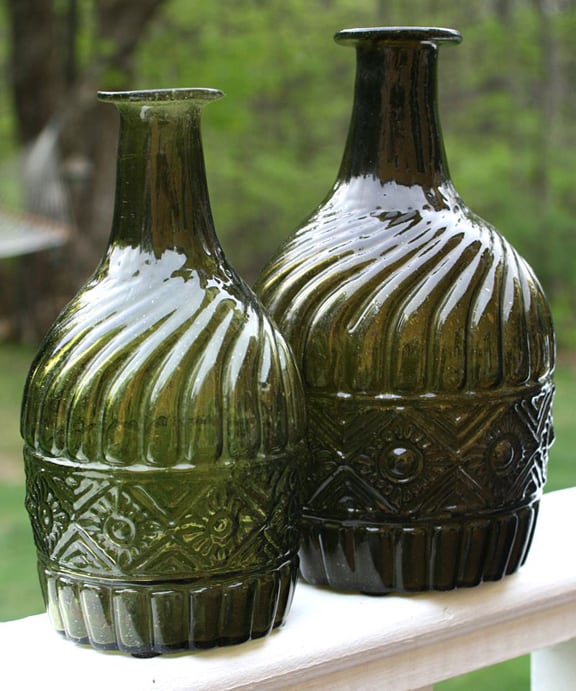
Primary Image: GIII-2 Type 2 Blown Three Mold Decanter imaged on location by Alan DeMaison, FOHBC Virtual Museum Midwest Studio
Support Image: Auction Lot 162: Blown Three Mold Decanter, Mount Vernon Glass Works, Vernon, New York, 1820-1840. Cylindrical, medium yellow olive, tooled flared mouth – pontil scar, quart; (light exterior high point wear, several open surface bubbles on interior edge of mouth). GIII-2 Type 1 Beautiful color and large flared mouth. Generally fine condition. – Norman Heckler Jr. & Sr., Norman C. Heckler & Company, Auction #170
Support Image: Auction Lot 165: Blown Three Mold Decanter, Mount Vernon Glass Works, Vernon, New York, 1820-1840. Cylindrical, medium to deep olive green, tooled flared mouth – pontil scar, pint; (light exterior high point wear). GIII-2 Type 2 Rich color. A pleasing form and mold design. Fine condition. – Norman Heckler Jr. & Sr., Norman C. Heckler & Company, Auction #170
Support Image: Auction Lot 26: [Museum Example] Blown Three Mold Decanter, Mount Vernon Glass Works, Vernon, New York, 1820-1840. Cylindrical, deep yellow olive, tooled flared mouth – pontil scar, pint; (exterior high point wear, pinpoint flake from edge of base). GIII-2, type 2. A pleasing early form and color. Considered rare. Fine condition. Ex Robert W. Skinner, Jr. collection. – Norman Heckler Jr. & Sr., Norman C. Heckler & Company, Auction #159
Support Image: Auction Lot 4: Blown Three Mold “Brandy” Decanter, Mount Vernon Glass Works, Vernon, New York, 1820-1840. Bulbous form, colorless, tooled flared mouth with blown period hollow stopper – pontil scar, ht. with stopper 10 7/8 inches, quart. GIII-2, type 2 Listed as scarce. Strong mold impression. Fine condition. – Norman Heckler Jr. & Sr., Norman C. Heckler & Company, Auction #118
Support Image: Blown Three Mold GIII-2 Type 1 and Type 2 illustration. – American Glass by George S. and Helen McKearin, Crown Publishers Inc., New York, 1989.
Support: Reference to American Glass by George S. and Helen McKearin, Crown Publishers Inc., New York, 1989.
Support: Reference to American Bottles and Flasks and Their Ancestry by Helen McKearin and Kenneth M. Wilson, Crown Publishers, New York, 1978.
Support: Reference to Brian Wolff and Mount Vernon Glass Works – Vernon, New York writings.
Join the FOHBC: The Virtual Museum is a project of the Federation of Historical Bottle Collectors (FOHBC). To become a member.


